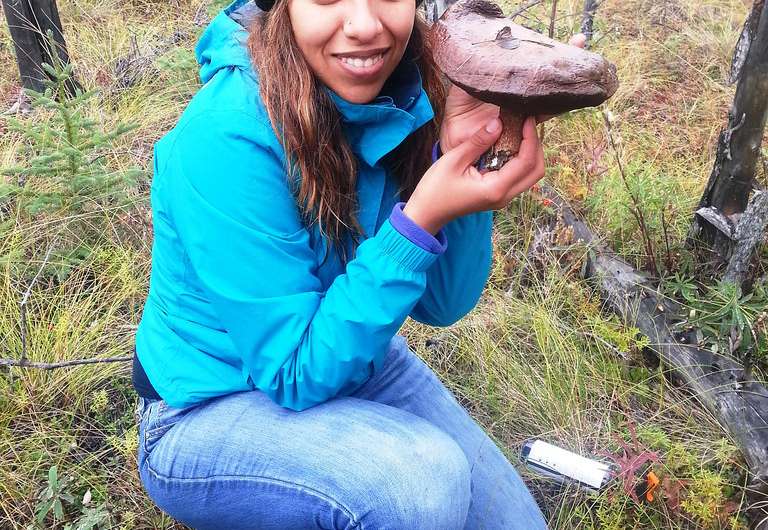How do mushrooms contribute to global warming?

Global warming is increasing with each day that passes and the poles begin to thaw. There has been little research into the harm caused by fungi (mold that contribute to the production of greenhouse gases.
As determined by a study conducted at the University of California by the Mexican Adriana Romero, fungi from Alaska begin to adapt to high temperatures and contribute to global warming by increasing the amount of carbon dioxide (CO2) in the atmosphere.
Master in Molecular Ecology from the University of Baja California, Adriana explained that fungi are responsible for destroying the organic matter such as leaves that fall from the trees, and feed nutrients to plants.
"Because in Alaska, most of the time it's cold, fungi are asleep and do not contribute to global warming, but with high temperatures (10-30 °C), the organisms wake up and generate CO2."
The study was conducted by growing mushrooms in tubes 30 centimeters long and exposing them to temperatures above 25 °C.
"We chose the orange mold as a model because it is a species that commonly grows in the area, plus all its physiology, life cycle, genes and what do they code for are known," said Romero, a native of Sonora, northern state of Mexico.

When this mold grows, there is a cell division that is interpreted as a new generation. In the experiment, by cultivating 15 tubes for eight months 1,500 generations were achieved. After that, a physiological assay compared these tubes to fungi not exposed to high temperatures.
The results determined that the fungus shows a faster metabolism; it grows and reproduces more quickly, breathes more oxygen and exhales more carbon dioxide. With this information, it is possible to extrapolate for the whole community of fungi in the planet.
Romero's work is complemented by field studies in Alaska, where she observed in real time how climate change affects the community of forest mushrooms.

"Fungi breathe as humans; they inhale oxygen and exhale CO2 and although there are many of us, we are nothing compared with the amount of fungi," said the specialist.
She explained that Alaska is the region with the most fungi in the world. As summers have grown longer, up to five months, these organisms are more active for longer periods during the year.
Some scientific models determine that if fungi adapt to global warming, as Romero warns, they will not maintain a high metabolism for a long time, which means that there will be a peak contribution of CO2 to the atmosphere, that will later drop and return to normal conditions; however, the climate damage will be irreversible.
"Although there are things we cannot control such as metabolism, evolution and adaptation of fungi, we can make changes in our daily life that may contribute to curb global warming and avoid drastic changes in temperature," concluded the researcher.
Provided by Investigación y Desarrollo



















